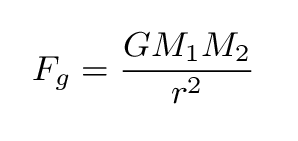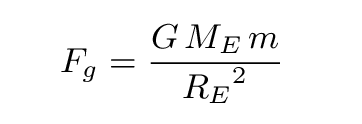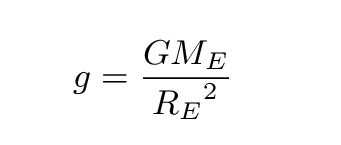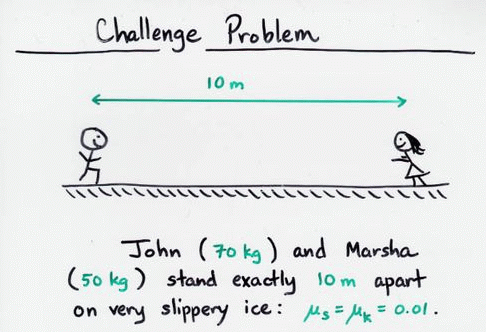
 Copyright © Michael Richmond.
This work is licensed under a Creative Commons License.
Copyright © Michael Richmond.
This work is licensed under a Creative Commons License.
How can we measure the mass of the Earth, ME? Your book says that our planet has a mass of about 5.98 x 1024 kg -- but whence comes that figure?
Let's start with the Law of Universal Gravitation, which Newton deduced back in the late 1600s.

If we consider the force between the Earth and a small object on its surface, then

Now, it's very easy to measure the acceleration with which objects fall. We give the special name g to this local acceleration due to gravity. We can derive g by dividing the gravitational force by the mass of the little object m:

Hmmmm, let's look at the terms in this equation:
Hey -- we could re-arrange this equation and solve for the mass of the Earth:

All we need to know is the value of the universal constant of gravitation, G. So, if we can somehow determine G, then we can plug in all the other values and find the mass of the Earth.
But how to measure G?
One way to figure out the value of G is to set up an experiment with two masses and measure the force pulling them together.

Q: What is the initial acceleration of
Marsha towards John?
Hmm... Friction is always going to be a problem. Because the force of gravity between people-sized objects is so very, very small, friction will always overwhelm it. We need to create an experiment in which friction cannot spoil the fun.
Despite the tiny size of the gravitational force between two ordinary objects, it is possible to measure this force, even with low-tech equipment. Take a look at this experiment, which shows motions due to the gravitational force between chunks of metal and rocks.
This material comes from experiments by John Walker. You can find his descriptions of gravitational experiments at http://www.fourmilab.ch/gravitation/foobar/
This experiment was first performed by the eccentric English scientist Henry Cavendish. The apparatus was designed and constructed by John Michell, but he died before he could do the work, and his equipment was sent to Cavendish. In the late 1790s -- over one hundred years after Newton had published his Law of Gravity -- Cavendish managed to use a torsion balance to measure the attractive force between a set of masses in his laboratory.
For reasons I won't explain here, Cavendish described his results in terms of the average density of the Earth. For convenience, I'll convert his result to the equivalent value of G:
-11 N * m*m
G = 6.76 x 10 -------
kg*kg
Q: What is the mass of the Earth, based
on this result?
 Copyright © Michael Richmond.
This work is licensed under a Creative Commons License.
Copyright © Michael Richmond.
This work is licensed under a Creative Commons License.